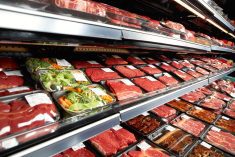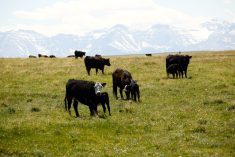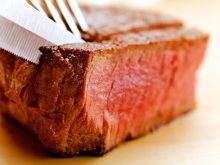Despite an import ban early in the year, South Korea’s imports of Canadian beef spiked in March and April.
South Korea banned Canadian beef imports from December of 2021 until January 19, 2022, due to an atypical BSE case found in an Alberta cow. January volumes were down 41 per cent from last year but rebounded strongly in February. March and April then both saw record-high numbers of over 3,000 tonnes. Consequently, in the first four months, volumes of 9,333 tonnes valued at $105 million are up 184 per cent in volume and 360 per cent in value from the same period in 2021. Exports to South Korea for the first four months of the year now represent 5.7 per cent of total exports, up 3.1 per cent from the end of 2021.

On January 1, 2022, the import tariff applied in South Korea to Canadian beef imports under the Canada-Korea Free Trade Agreement fell to 18.6 per cent. Under the agreement, tariffs drop each year by 2.67 per cent, with all tariffs and safeguard duties on Canadian beef products to vanish by 2030.
In the first two months of the year, COVID-19 cases were still very high, and restrictions were tight. By mid-April, many restrictions lifted as daily case numbers declined. Food service, catering and retails opened fully in April and there are high hopes sales will recover as marketing programs run again. This recovery has already been seen in the export numbers so far.
Read Also

Pen riders still better than tech at detecting respiratory disease in feedlot cattle, says researcher
Recent research found that pen riders are better than tech at flagging signs of BRD in feedlot cattle
Canada Beef currently provides support for marketing and promotional products in South Korea to help build demand. These promotional events in supermarkets and food services have sparked interest among Korean consumers to cook high-quality red meat at home. Currently, South Korea consumes 1.4 per cent of the world’s beef.
Other big suppliers to South Korea include the U.S., whose exports to Korea are up six per cent in volume (95, 513 tonnes); and Australia, whose exports to South Korea of 47,510 tonnes were down six per cent year to date, as their total exports are down eight per cent year-over-year as well.
Chuck and rib continue to follow trends driven by traditional foodservice demand and remain the top two primals exported to South Korea. Chuck has gained a share over rib. Canadian beef isn’t carried in any major retail stores, as they mostly sell locally grown Korean, U.S. or Australian beef. The beef that is imported from Canada is consumed at galbi (grilled short rib) restaurants and/or galbi-tang (short/back rib soup) restaurants.
Exports by primal to South Korea January to April 2022:
- Chuck cuts at 3,561 tonnes valued at $43.7 million were up 177 per cent in volume and up 418 per cent in value. Chuck cuts represent 38 per cent of total volume to South Korea.
- Ribs cuts at 3,211 tonnes valued at $37.8 million were up 111 per cent in volume and up 251 per cent in value from the same period in 2021. Rib cuts represent 34 per cent of total volume.
- Offal cuts at 1,883 tonnes valued at $14.7 million were down 20 per cent in volume and up 2,132 per cent in value from the same period in 2021. Offal cuts represent 20 per cent of South Korea.
- Flank/plate cuts at 452 tonnes valued at $6.4 million were up 654 per cent in volume and up 1,083 per cent in value. Flank/plate cuts represent five per cent of total volume to South Korea.
- Loin cuts at 224 tonnes valued at $2.3 million were up as there were zero exports of loin to South Korea in 2021. Loin cuts represent two per cent of total volume to South Korea.
- Brisket and other cuts were down 100 per cent since there has been zero product exported in 2022.
- There were zero hip cuts in 2022.


First quarter exports strong for Canadian beef
Overall, Canadian beef exports in April 2022 hit 44,172 tonnes and were valued at $396 million. This is up six per cent in volume and 20 per cent in value from April 2021. Federally inspected slaughter numbers of 251,091 head were down one per cent from April 2021. Trends over the last four months have been consistent with the first quarter of 2021 and the five-year average. Monthly exports continue to strengthen as we head into the summer months.
From January to April 2022, beef exports were up nine per cent in volume and 34 per cent per cent in value from last year. Year-to-date export volumes increased to the U.S. (10 per cent), Japan (19 per cent), Taiwan (143 per cent), the EU-27 (44 per cent), South Korea (184 per cent), the Middle East and North Africa regions (22 per cent), and South Korea (10 per cent). Export volumes declined to Hong Kong and Macau (-61 per cent), mainland China (-98 per cent), and Southeast Asia (excl. Taiwan) (-2.0 per cent).
Since January, China has banned imports of Canadian beef, but with fears of food shortages in China, trade may resume.

















